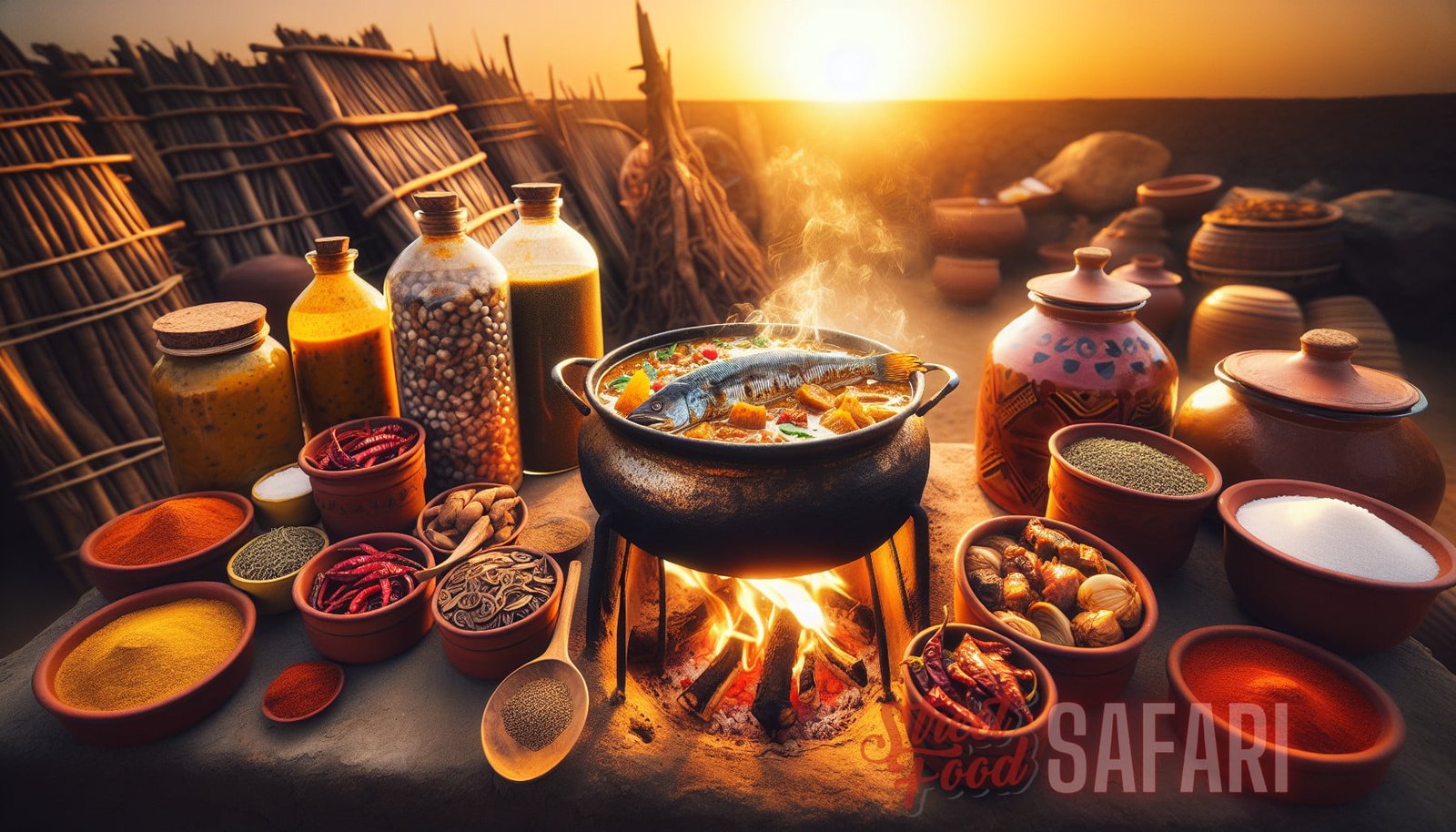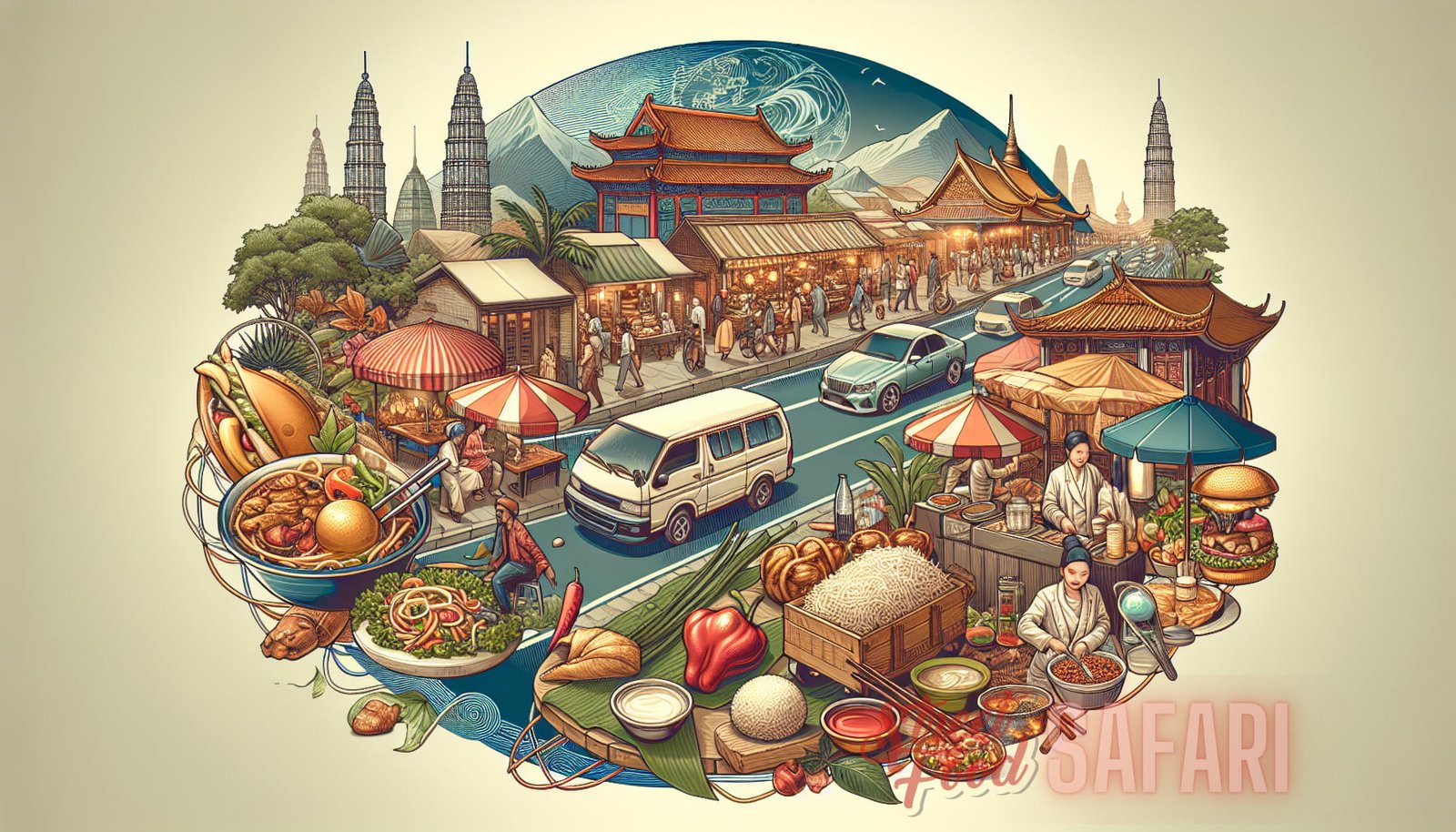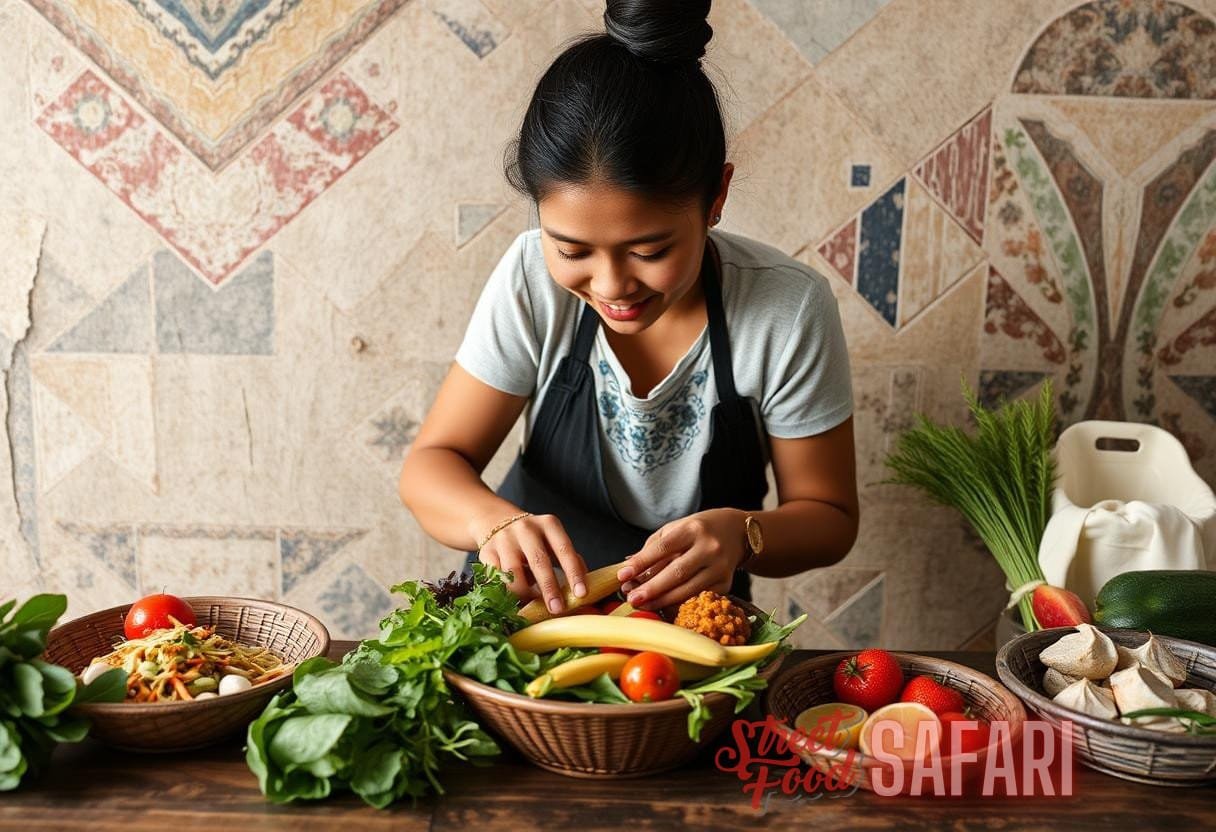Introduction
One of the most exciting aspects of traveling is being able to immerse yourself in different cultures and experience the local way of life. And what better way to do that than through food? Exploring local cuisine is a delicious journey that allows you to connect with the history, traditions, and flavors of a particular region. From street food stalls to high-end restaurants, every bite tells a story.
In this article, we will take you on a culinary adventure around the world, exploring the unique flavors and traditions of local cuisine. Whether you’re a food enthusiast or simply looking for new travel experiences, this guide will help you navigate the vast culinary landscape and make the most of your gastronomic journey.
The Importance of Local Cuisine
Local cuisine is an integral part of a country’s culture and identity. It reflects the history, geography, climate, and traditions of a region. Exploring local flavors allows you to understand the people and their way of life on a deeper level. Here are a few reasons why local cuisine is so important:
- Historical Significance: Local dishes often have a rich history that dates back centuries. They reflect the influence of different civilizations, migrations, and cultural exchanges throughout the years. By exploring local cuisine, you can uncover the stories behind the food and gain a deeper appreciation for the region’s heritage.
- Connection to the Land: Local cuisine is deeply rooted in the land and resources of a region. It showcases the abundance and diversity of local ingredients, from fresh produce to unique spices. By sampling local dishes, you can taste the flavors of the land and better understand the relationship between people and their environment.
- Cultural Exchange: Food has always been a medium for cultural exchange. Through the exploration of local cuisine, you can discover the different culinary traditions, cooking techniques, and ingredients that make each region unique. It also provides an opportunity to interact with locals, learn about their customs, and foster a sense of community.
- Taste Sensations: Ultimately, local cuisine offers a sensory delight. Every bite is a burst of flavors, textures, and aromas that can transport you to another world. From spicy street food in Asia to hearty stews in Europe, each dish has its own distinct personality that will leave a lasting impression.
Around the World in Local Flavors
Now that we understand the significance of local cuisine, let’s embark on a journey around the world to explore some of the most iconic and delectable dishes. From traditional recipes passed down through generations to modern interpretations, each destination offers a unique culinary experience.
Asia
Asia is a treasure trove of culinary delights, with diverse flavors and cooking styles that vary from country to country. From street food stalls to Michelin-starred restaurants, the continent offers something for every food lover:
- Thailand: Known for its vibrant street food culture, Thailand is a food lover’s paradise. From the tangy flavors of Pad Thai to the rich curries and spicy soups, Thai cuisine is a tantalizing blend of sweet, sour, salty, and spicy.
- Japan: Japanese cuisine is acclaimed for its precision and attention to detail. From sushi and sashimi to ramen and tempura, each dish is a work of art. The emphasis on fresh, seasonal ingredients and delicate flavors is what sets Japanese cuisine apart.
- India: Indian cuisine is a riot of flavors and spices. From the fiery curries of the South to the aromatic biryanis of the North, each region has its own culinary traditions. Indian food is characterized by its complex spice blends, vibrant colors, and diverse vegetarian options.
- China: Chinese cuisine is incredibly diverse, with regional variations that reflect the vastness of the country. From the subtle flavors of Cantonese cuisine to the bold and spicy dishes of Sichuan, there is something to please every palate. Dim sum, Peking duck, and hot pot are just a few of the must-try dishes.
- South Korea: Korean cuisine is known for its bold flavors and fermented dishes. From kimchi and bulgogi to bibimbap and tteokbokki, each dish offers a unique combination of savory, spicy, and umami flavors. Korean barbecue, where you can grill your own meat at the table, is a popular dining experience.
These are just a few examples of the incredible culinary traditions that can be found in Asia. Exploring the local cuisine in each country will open your taste buds to a world of new flavors and culinary experiences.
Europe
Europe is a melting pot of culinary traditions, with each country showcasing its unique flavors and specialties. From hearty stews to delicate pastries, Europe has something to offer every palate:
- Italy: Italian cuisine needs no introduction. From the simplicity of a classic Margherita pizza to the indulgence of creamy pasta dishes, Italian food is all about quality ingredients and traditional cooking methods. Each region has its own specialties, from risotto in the north to fresh seafood in the south.
- France: French cuisine is renowned for its elegance and sophistication. From buttery croissants and delicate pastries to rich sauces and hearty stews, French food is a celebration of flavor, texture, and presentation. Indulge in a cheese platter or sample the famous escargots for a truly French experience.
- Spain: Spanish cuisine is a vibrant tapestry of flavors, influenced by its diverse regions and historical influences. From tapas and paella to churros and gazpacho, Spanish food is all about bold spices, fresh ingredients, and communal dining. Don’t forget to pair your meal with a glass of Sangria or a refreshing glass of Spanish wine.
- Greece: Greek cuisine is a celebration of freshness and simplicity. From the iconic Greek salad to the succulent souvlaki and moussaka, Greek food is all about bold flavors and the use of fresh herbs and olive oil. Indulge in tzatziki, feta cheese, and baklava for a true taste of Greece.
- United Kingdom: British cuisine has evolved over the years, influenced by its colonial history and multicultural society. From classic fish and chips to hearty pies and roast dinners, British food is all about comfort and indulgence. Don’t forget to try a traditional afternoon tea with scones, clotted cream, and jam.
Africa
African cuisine is as diverse as the continent itself, with a rich tapestry of flavors and cooking techniques. From the vibrant spices of North Africa to the rich stews of West Africa, exploring African cuisine is a feast for the senses:
- Morocco: Moroccan cuisine is a fusion of flavors influenced by Arab, Berber, and French cuisines. From the fragrant tagines and couscous to the sweet pastries and mint tea, Moroccan food is a celebration of spices and textures. Don’t miss the opportunity to try a traditional lamb or vegetable tagine.
- Nigeria: Nigerian cuisine is as diverse as its people, with each region showcasing its unique flavors and specialties. From the spicy jollof rice and suya to the rich egusi soup and pounded yam, Nigerian food is a celebration of bold flavors and communal dining.
- South Africa: South African cuisine is a melting pot of flavors and cultures. From the hearty braai (barbecue) and boerewors to the savory bobotie and biltong, South African food is all about comfort and indulgence. Don’t forget to pair your meal with a glass of local wine.
- Ethiopia: Ethiopian cuisine is an experience like no other. From the flavorful stews and injera (spongy bread) to the fragrant coffee ceremonies, Ethiopian food is a sensory delight. Don’t miss the chance to try the iconic dish of injera topped with various spicy stews.
- Senegal: Senegalese cuisine is a fusion of West African, French, and North African flavors. From the hearty thieboudienne (fish and rice) to the spicy yassa (marinated meat or fish), Senegalese food is a celebration of bold spices and fresh ingredients.

These are just a few examples of the incredible culinary traditions that can be found in Africa. Exploring the local cuisine in each country will open your taste buds to a world of new flavors and culinary experiences.
The Americas
The Americas offer a wide range of culinary delights, from fiery Mexican cuisine to the bold flavors of Brazil. Here are a few examples of the vibrant flavors you can expect:
- Mexico: Mexican cuisine is a celebration of bold flavors and colors. From the spicy tacos and salsas to the rich mole sauces and tamales, Mexican food is a fiesta for the taste buds. Don’t forget to sample a traditional tequila or mezcal to complete the experience.
- United States: American cuisine is as diverse as its people, with each region showcasing its unique flavors and specialties. From the soul food of the South to the seafood of the East Coast and the barbecue of the Midwest, American food is a melting pot of flavors and influences.
- Brazil: Brazilian cuisine is a carnival of flavors influenced by its indigenous, African, and European heritage. From the feijoada (black bean stew) and pão de queijo (cheese bread) to the caipirinha cocktail and brigadeiros (fudge balls), Brazilian food is a celebration of bold spices and indulgence.
- Peru: Peruvian cuisine is gaining global recognition for its unique flavors and fresh ingredients. From ceviche and causa to lomo saltado and pisco sour, Peruvian food is a fusion of indigenous, Spanish, and Asian influences. Don’t miss the chance to try the iconic dish of ceviche made with fresh seafood.
- Canada: Canadian cuisine is a reflection of its diverse population, with influences from around the world. From poutine and butter tarts to Nanaimo bars and tourtière, Canadian food is a fusion of flavors and traditions. Don’t forget to try the iconic dish of poutine, a comforting combination of fries, cheese curds, and gravy.
Exploring Local Flavors: Tips and Recommendations
Now that you’re equipped with a global culinary map, let’s dive deeper into how to make the most of your culinary journey:
Research Before You Travel
Before you embark on your culinary adventure, do some research on the local cuisine of your destination. Look for popular dishes and specialties, as well as any unique dining customs or etiquette. This will help you navigate the local food scene and ensure you don’t miss out on any must-try dishes.
Pro tip: Check out the unveiling hidden gems and authentic culinary experiences article for more tips on finding authentic local food and ensuring food safety abroad.
Visit Local Markets
One of the best ways to immerse yourself in the local cuisine is by visiting local markets. Here, you can witness the vibrant colors, smell the spices, and interact with the vendors. Not only will you be able to sample fresh produce and local delicacies, but you’ll also get a glimpse into the daily life of the locals.
Pro tip: Check out the unveiling local delicacies article for more tips on finding authentic local food and hidden culinary gems.
Try Street Food
Street food is the backbone of local cuisine in many countries. It offers a glimpse into the everyday flavors and culinary traditions of a region. Don’t be afraid to try the street food stalls and food carts – they often serve some of the most delicious and authentic dishes.
Take a Cooking Class
If you’re truly passionate about local cuisine, consider taking a cooking class. This will not only give you a hands-on experience in the kitchen but also provide you with valuable insights into the local ingredients, cooking techniques, and flavor combinations. Plus, you’ll be able to recreate your favorite dishes back home.
Ask the Locals
The best way to discover hidden culinary gems is by asking the locals for recommendations. Strike up a conversation with your hotel staff, taxi drivers, or fellow travelers to find out where the locals eat. They will often lead you to small, family-run restaurants or street food vendors that are off the beaten path.
Pro tip: Be open-minded and willing to try new things. The world of local cuisine is vast and diverse, and you never know what flavors and dishes might surprise you.
Conclusion
Exploring local cuisine is an essential part of any travel experience. It allows you to connect with the culture, history, and flavors of a region on a deeper level. From the aromatic spices of Asia to the comforting stews of Europe and the fiery flavors of Africa, each destination offers a unique culinary journey.
So, the next time you’re traveling, make sure to venture beyond the tourist attractions and immerse yourself in the local food scene. Sample street food, visit local markets, and don’t be afraid to try new flavors. Your taste buds and travel memories will thank you.



